Are You Maximizing 401k Contributions?
Insights from experienced financial professionals.
The more money that you can save when you are working, the easier it should be for you to retire and enjoy your golden years. Unfortunately, Social Security may no longer provide a sufficient income to live on during retirement. To combat this financial challenge, many small businesses have adopted the corporate approach to 401k matching. In fact, in 2019 the percentage of 401k matching had grown from 3 percent to an estimated 4.7 percent.1 This growth has inspired many individuals to learn more about 401k planning.
What You Need To Know About 401k Planning
There are two types of 401(k): the traditional 401(k) and the Roth 401(k). For professionals under the age of 50, the annual contribution limit is $19,000. For professionals over the age of 50, the annual contribution limit is $25,000. It is important to note that the limits apply regardless of how much income is earned throughout the year. Additionally, the annual contribution limits can change based on updated tax legislation.
The money in your 401k can be invested with a conservative, moderate, or aggressive approach. Additionally, the money that you place in a traditional 401k is considered tax-free, which means that your contribution is deducted from your earnings pre-tax. The contributions in a traditional 401k will also grow on a tax-deferred basis. However, once you turn 59 1/2, you will be able to take penalty-free withdrawals from your traditional 401k. Each withdrawal will be taxable. When you turn 72, you will need to start taking the Required Minimum Distribution for Year-End (RMD).
Unlike a traditional 401k, a Roth 401k allows you to contribute funds on a post-tax basis. In layman's terms, the Roth 401k offers no immediate tax break. However, once the money is in your retirement account, it will grow on a tax-free basis. You will be able to take penalty-free withdrawals at 59 1/2 and RMDs will begin at the age of 72. However, your Roth 401k withdrawals will be tax-free.3
All Generations, Including Millennials Should Maximize Contributions Into Retirement Accounts
The more strategic you are with your 401k planning, the easier it should be for you to retire comfortably. To help maximize your contributions and growth, you can implement the following strategies.
- Pay attention to the yearly contribution limit. In 2018, an estimated 41 percent of American workers were taking advantage of 401k matching offered by an estimated 79 percent of American businesses.2 In 2020, the percentage of American workers participating in 401k matching programs is expected to grow due to a $500 increase in the 2019 annual contribution limits.
- Choose the right type of investments. Your investment strategy will depend on your unique financial circumstances. You will want to take on an appropriate level of risk, diversify your investments to maximize growth, and minimize fees.
- Maximize your full employer match. Professionals should speak with their human resource departments to learn more about 401k employer matching. On average, companies match 4.7 percent of employee contributions.4
- Take advantage of catch-up contributions. Every year the catch-up limit changes. In 2019, the catch-up limit reached $6,000, which means that professionals ages 50 and over can set aside an additional $6,000 in their annual contributions. Catch-up contributions create the opportunity for older workers to help boost their retirement savings.
- Use a Roth 401k to your advantage. The main benefit of a Roth 401k is that it offers tax-free withdrawals during retirement. Keep in mind that a traditional 401k is tax-deferred, which means that penalty-free retirement withdrawals will be taxed based on your tax bracket at the time of withdrawal.
Your Future Awaits. Are You Maximizing Your Financial Opportunities?
In conclusion, if you want to prepare for retirement, then you need to maximize your contributions across your traditional and Roth 401k. In some cases, it might make sense to have both a traditional and Roth 401k. To discover the right investing and retirement strategies for you, contact a member of the LPL Financial network today.
1. Adamcyzk, A. The average employer 401(k) match is at an all-time high—see how yours compares. 2019. CNBC.
2. LPL Financial. LPL Uses Tax Reform Savings to Increase 401(k) Support for Employees. 2019. LPL.
3. Parker, T. Maxing Out Your 401(k) and What to Do Next. 2019. Investopedia.
4. LPL Financial. 401(K) Plans. 2019. LPL.
The opinions voiced in this material are for general information only and are not intended to provide specific advice or recommendations for any individual. To determine which investment(s) may be appropriate for you, consult your financial professional prior to investing. All performance referenced is historical and is no guarantee of future results. All indices are unmanaged and cannot be invested into directly. The information provided is not intended to be a substitute for specific individualized tax planning or legal advice. We suggest that you consult with a qualified tax or legal advisor. LPL Financial Representatives offer access to Trust Services through The Private Trust Company N.A., an affiliate of LPL Financial. LPL Tracking #1-934154


